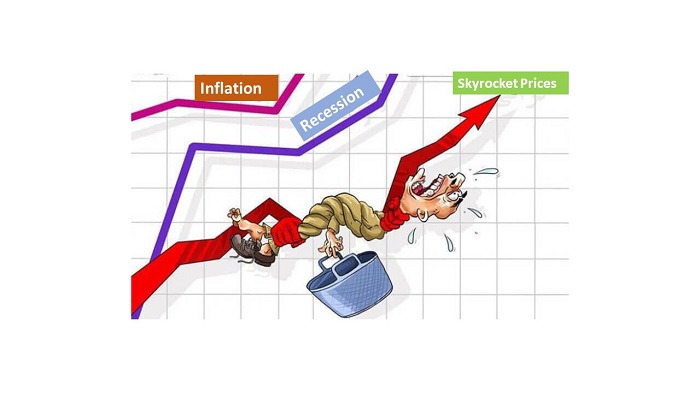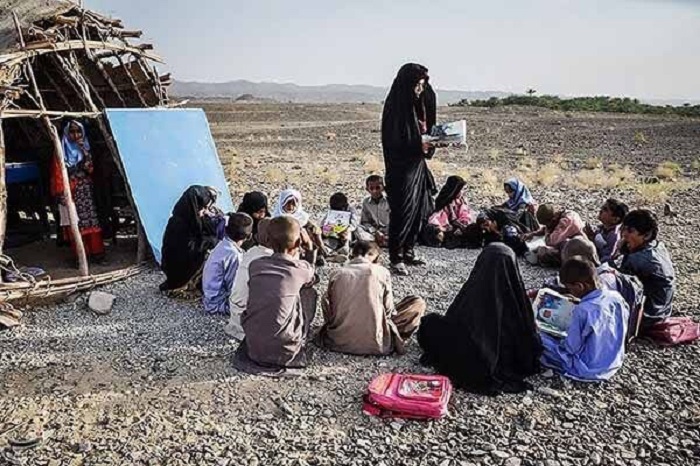
Iran’s economy cripples people
Iran’s new Budget (fiscal year beginning March 21, 2020), called in short, the 99 budget, has turned to a silent crisis in the country. A brief look at the regime’s own newspapers explains why.
Morad Rahdari, economist and member of Payam-e-Noor University’s scientific corps tells Mardomsalari daily that the way budget figures for the coming financial year are presented by the government are demagogic at best.
He says:
“The government says we have 25 million employed in the country, out of an active population of 28 million according to them. They claim we have thus three million unemployed and a rate of unemployment equivalent to 10 to 11%. They claim having counted the working population out of the total 83 million population among those older than 10 years. Such a total population yields a much bigger workforce and their counting are flawed. Even if we take the working population to be above 15 years old and the retirement age to be 65 (and not higher as they claim!), we have to count a working population of around 50 million. So with their 25 million employed we would have at least the same number of unemployed. This figure is confirmed by the high rate of social anomalies such as drug addiction.”
On the country’s strategic currency reserves, he says:
“About a year ago, we had around 180B dollars of reserves, of which less than 80B remains, and this amount may not be readily available but only engagements. Last year we had counted on oil exports worth 1.5M b/day, but in reality, we stayed with less than 200.000 b/day, so we were obliged to dig into our reserves. The same fate awaits us in the 99 budget, so if our deposits touch the rock-bottom, what should be done for the 1400 budget? The foreign currency deposits are our safety valve, and if we continue for some time without providing the country’s economy with the foreign currency we would not be able to manage the economy, that is we would be putting the country in danger. How much taxes can people pay? This is a grave problem concerning tax income, half of the income is supposed to be provided by tax money in the 99 budget. This is a dangerous behavior, first of all, we are going to increase taxes by 35%, in a social atmosphere that we are all familiar with; we have had no real GDP during the last ten years. We have also seen that prices have increased by 15%, another facture not in line with a 35% tax rate. Even if by taxes we mean the VAT, the presence of intermediaries would only increase prices and make life difficult for the people.
More importantly, when we cannot sell oil, how can we borrow money to run the country? The budget deficit with 131Tr Tomans, even if we would not count 200 Tr Tomans, would be around 40% of the income or about the size of all salaries, which is 60% of the tax income. So what should be done? Political considerations aside, this is no longer a budget deficit but a budget crisis.”
Unpaid Wages, Economic Crises, and Government Corruption Lead to New Protests in #Iran https://t.co/S1AC6FQyUH #IranProtests
— MEK Iran (Mujahedin-e Khalq) (@MEK_Iran) January 27, 2019
The other face of the budget crisis is the idling of social structures. For example, according to the UNESCO 2019 report, on data for 2017, the Iranian government is among the poorest when it comes to financing education by the government. With the mean world rate at 82% and the least government participation of around 65%, Iranian governmental participation is at best 55 to 60%.
Reza Omidi, assistant professor in Tehran University’s social science faculty, tells Shahrvand daily that budget figures are telltale warnings of social events. He sees a public school’s ceiling’s giving in with the pupils in the classroom or a car accident of the pickup truck taking pupils to school and other such events, appearing to be normal, in strong relation with the budget.
Omidi, who has worked more than ten years in the regime’s Planning and Budget Organization, explains his view on the 99 budget:
“The 99 budget is one of the most conservative budgets ever seen. One can ask who profits from this budget and how? For example, we see that with oil income decreasing, the income due to selling and leasing movable and immovable government property increasing tenfold, reaching around 50 Tr Tomans from 4 Tr Tomans, and government bonds swelling from 40 Tr Tomans to more than 80 Tr Tomans. The question here is who are those profiting from this volume of government bonds and selling off state property?”
Omidi continues: “In the ten chapter budget bill, the education’s budget is always one of the most important, including higher education as well. In the 99 budget, something around 90 Tr Tomans is devoted to education, of which around 21 Tr Tomans is to be spent on higher education with around 5 Tr Tomans to be gained by this section through its own means. So, the net education budget would be no more than 57 Tr Tomans, with an increase of about 18 to 20% compared to last year, which is an increase less than the yearly inflation rate. One can safely say that the increase would hardly cover salaries and bonuses of the educational staff, and that is without taking into consideration pending unpaid bonuses.
Another important problem is the 80% decrease in the pre-primary school budget. This specific education should be a government priority as in many countries, especially given Iran’s ethnic diversity. But the Ministry of education has never taken serious responsibility on the issue.
The next important question is the sharp decrease in school transport for pupils in poor regions, with a 50 B Toman decrease compared to last year. The news point to pickup trucks used to transport children to and from schools, giving rise to accidents like the one taking the lives of two pupils three months ago in Hormozgan. According to studies made in the province, one of the reasons leading to such events is that the budget allotted by the Education Ministry to school transport in poor regions is less than 50% of the real needs. The part not provided by the government is paid by families and municipalities, where cheaper means are used which leads to disaster. The total budget allotted to the topic, 197 B Tomans, is not an important figure in the country’s budget.

The poor condition of the education system and schools in Iran under mullah’s regime.
The increase in the number of pupils is also a warning for the overcrowding of schools, which has no share in the 99 budget.
Omidi says:
“We have around 14 million schoolchildren in the country, with a population rate of around 22.7 pupils in each classroom. To compare with other countries, India with 315 million pupils has the same classroom population rate, which emphasizes the importance of financing construction work in the education field. According to a report by the Organization for Renovation of Schools, around 28% of the total country schools are in a state of total ruin, and around 30% of the schools need essential reconstruction.”
